Photo
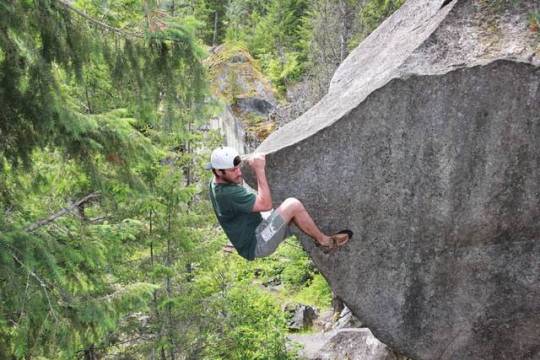
Hangin' out with my friend @therock he's a bit of a hard arse but he's never let me down 🤗👊🏞#findingawesome #climbinginspiration #climbing #Nelson #explorebc #explorelife #punny #bouldering #catchmeififall #therock #outdoors #hiking #camping #adventure #wanderlust (at Nelson, British Columbia)
#findingawesome#punny#camping#climbinginspiration#explorebc#explorelife#therock#wanderlust#bouldering#climbing#nelson#adventure#catchmeififall#hiking#outdoors
0 notes
Photo
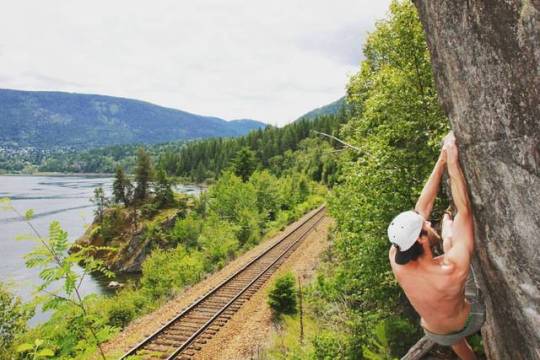
A few more weeks and we’ll be off on our climbing, biking, hiking adventure through Western BC & US West Coast 🚙. But until then there’s still awesome places to explore around Nelson! Just minutes out of Nelson towards Castelgar you can find world class bouldering at Grohman Boulders. Backing onto the water it’s the perfect place to spend a day exploring and cutting up your hands on quality granite comparable to Squamish 🌞👊
📷—–@samiseric
#catchmeififall
#nelson
#grohmansboulder
#explorebc
#mybackyard
#explorecanada
#insta
#travel
#hiking
#camping
#climbing
#outdoors
#photography
#photo
#bouldering
(at City of Nelson, British Columbia)
#camping#outdoors#explorecanada#insta#photo#travel#climbing#photography#bouldering#explorebc#hiking#grohmansboulder#mybackyard#nelson#catchmeififall
0 notes
Photo

I could get used to this climbing thing......if only I could say the same for my neck. Learning to lead climb and set anchors now after 8 days climbing. Aiming to be confident and safe at completely setting up a climb and cleaning the gear by myself by the end of June, wish me luck! 👊🏞 📷----@aloeharris #climbing #spring #mybackyard #bloodandsweat #happy #insta #penticton #skahabluffs #photography #photo ##explorelife #mymountainlife #rockclimbing #travel #rock #belay #catchmeififall (at Skaha Bluffs Provincial Park)
#catchmeififall#photo#climbing#penticton#travel#rockclimbing#mymountainlife#belay#photography#rock#spring#mybackyard#explorelife#bloodandsweat#skahabluffs#insta#happy
0 notes
Photo

My biggest aspiration is to inspire people to do good and be happy. Focus on the journey, not the destination. Joy is found not in finishing an activity but in doing it. 👊🌎 📷 - @aloeharris #climbing #summer #canada #explorelife #mybackyard #bloodandsweat #happy #insta #instagram #nelson #explorebc #photography #photo #fun #inspiration #inspire #play (at City of Nelson, British Columbia)
#insta#nelson#summer#mybackyard#bloodandsweat#climbing#explorelife#inspiration#explorebc#photo#canada#fun#instagram#inspire#photography#happy#play
1 note
·
View note
Photo
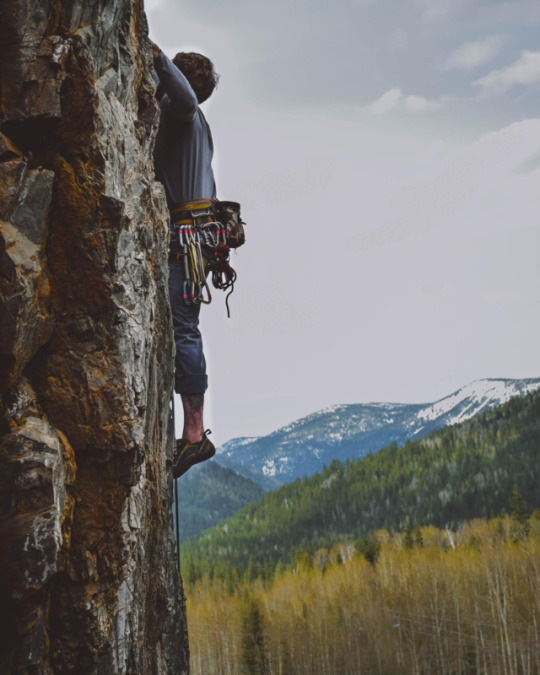
Grading System for Rock Climbing
In North and South America (and possibly other areas as well), the system used to represent the difficulty of a climb, or route is called the Yosemite decimal system (invented in Yosemite, California). Currently, it ranges from 5.0 to 5.15c. The prefix ‘5′ is part of hiking classification system that grades the difficulty of a hike from 1 to 5. The ‘5′ grade is where hiking and rock climbing merge. As people began hiking / climbing harder and harder routes, the ‘5′ grade had to be subcategorized and a suffix was added: 5.1 - 5.9. As people kept pushing the limits of what’s possible (Chris Sharma and Adam Ondra to name a couple), the system had to be further subcategorized. Beginning with 5.10, a letter is added to break this grade down even further (5.10a, 5.10b, 5.10c, 5.10d) This repeats for grades 5.11 through to 5.15. Every once in a while, someone will come along and climb something harder then anything else that’s been climbed before, so a letter is added, and the process continues indefinitely.
The grade of a climb, or route should be taken as a guideline at best. People come in all shapes and sizes and therefore climb in different ways, making certain movements easy for some and hard for others. This is why grades are often debated. It usually takes many people to climb a route and agree on a number to represent the difficulty. This will give following climbers an idea of what to expect. Don’t let a grade stop you from climbing something you want to climb. Grades can be very inconsistent when climbing in different places throughout the world. For example; I have climbed 5.11d, first try, in a number of different places from my hometown in eastern Canada, all the way to Peru. Yet, in certain places, like Joshua Tree, Ca. I’ve been shut down on 5.9. There should be a huge gap in difficulty between 5.9 and 5.11, yet sometimes there is not. So let the grade serve as a guideline and if a route looks like fun, then GO CLIMB IT!!!
Photo by @aloeharris
#climbing#rockclimbing#photography#nelson#spring#instagram#climbinglife#climbhard#grading#5.15c#pushthelimits#sportclimbing#goclimb#goclimbit
2 notes
·
View notes
Photo
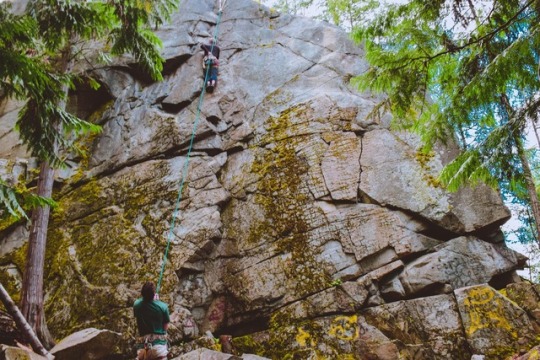
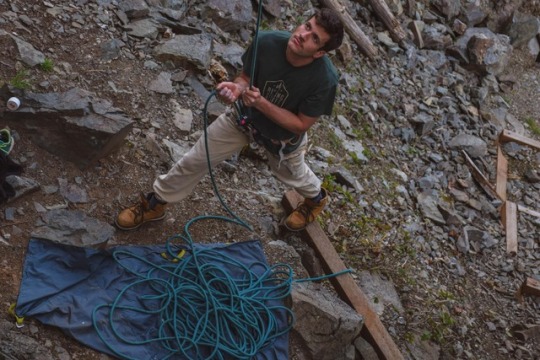
Belaying 101
Starting with the basics is always the worst part of any new skill set but the most important. A wise man once told me there’s no point building a million dollar house on sand, basically, without the base whatever you build will eventually fall. Belaying may be basic and less exciting than climbing but it’s vital if you don’t want to kill your buddy, even though you may have the urge once and a while. Basically belaying is making sure your buddy has enough rope to move but still keeping it tight so they don’t fall far if they slip. So here are a few things to remember when belaying and tips that helped me become more efficient at it -
1. Using a grigri (mechanism the rope feeds through attached to your harness) the symbols must match the correct ends. The climbers end feeds towards the climber and the other end towards the belayer.
2. Partner safety check - check that your climber has harness double backed correctly and that they’re figure 8 knot and stop knot is secure. Show the climber that your harness straps are double backed and that your carabiner is locked through the grigri. Most importantly pull up on the rope feeding towards the climber and it should lock when you try and pull it up, if it doesn’t it’s around the wrong way and your friends got a long way to fall.
3. If it looks wrong it is - it won’t take long to get belaying down and notice if something looks off. Better safe than sorry, if it looks twisted or upside down or wrong, it is.
4. Invert the carabiner so the gate naturally screws down (gravity helps keep it locked and stay locked).
5. Power stance helps if they slip so they don’t send you into the slab (it hurts).
6. Communication is very important. Before climbing the verbal cues for safety are as follows. Belayer “You are on Belay”, Climber “Climbing”, Belayer “Climb on” (Or “Rock on”, cause it’s more fun to say).
Tip of The Day! This one really helped me predict how much rope I should take up or slack I should give. Rather than watching every move your partner does like moving a hand up to a hold, moving laterally or just moving legs, watch their hips. When the hips move it guarantees the body has moved UP not just AROUND and not actually gained any elevation.
#adventurestartshere#catchmeififall#climbing#rockclimbing#climbon#belay#belaying#canada#nelson#getoutstayout#modernoutdoorsman#spring#summer#adventure#challengeaccepted#climbinglife#photo#photography#art#leavenotrace#learning#beginner#beginyourjourney#student#create#instagram#insta
2 notes
·
View notes
Text
Meet the Instructor
Hello, My name is Eric Samis. I am 27 years old and was born and raised on the east coast of Canada in Saint John, New Brunswick. I have been climbing for around 9 years and started out like a lot of climbers do, in an artificial climbing gym. I quickly moved to the realm of outdoor climbing and was instantly hooked. The rush and enjoyment I felt combined with my natural curiosity of nature and the outdoors, climbing became the perfect obsession.
I have a fair amount of experience with instructing and teaching. From showing the general public how to tie knots and belay in a gym to teaching multi-pitch trad (traditional) climbing. Most of these experiences are fun and why I continue to teach and instruct those who are interested in climbing. A lot can be learned through teaching others.
1 note
·
View note
Photo
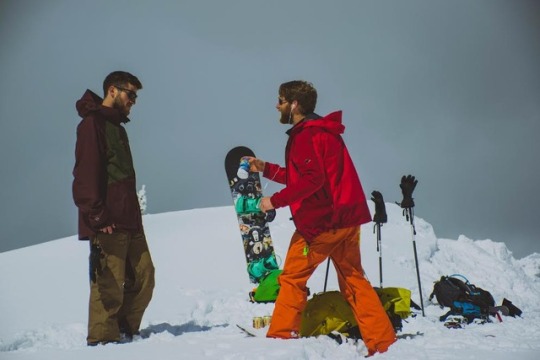
Will (Left) and Eric (Right) enjoying last Beers out at the Kootenay Pass before riding season finishes and climbing season begins. Photo Credit Aloe Harris
1 note
·
View note
Text
Meet the Student
Who would want to go camping when I can go to a 5 star resort? Who cares about nature? Why the hell would I hike or climb up a mountain, sounds like a lot of effort for nothing to me........ These are the questions you would have heard from me if you talked to me a few years ago. My name is Will Dowell and I’m addicted to nature, more precisely the extreme side of nature. My eyes were opened to the beauty and adventure of nature when I began following the snow three years ago. After three years and six consecutive snow seasons between Australia, Japan and Canada I decided to remind myself what summer was about again. I love getting out of my comfort zone, scrap that, I hate getting out of my comfort zone because I’m a normal human but I realise how good it is for the mind, body and soul to challenge yourself.
So here I am, ready to take on the new challenge of rock climbing and test myself mentally and physically while sharing my experiences with all the other beginners out there. So whether you want to use me as a test dummy before you try it yourself, want some helpful hints and tips on the best areas, equipment and techniques or just need a bit of motivation to get out there and try something new, follow us on our adventures through Canada!
#adventurestartshere#catchmewhenifall#climbing#rockclimbing#canada#nelson#travel#nature#getoutstayout#modernoutdoorsman#spring#summer#adventure#climbon#challengeaccepted#climbinglife#photography#leavenotrace#learning#beginner#beginyourjourney
2 notes
·
View notes